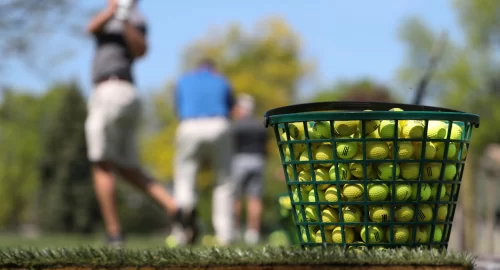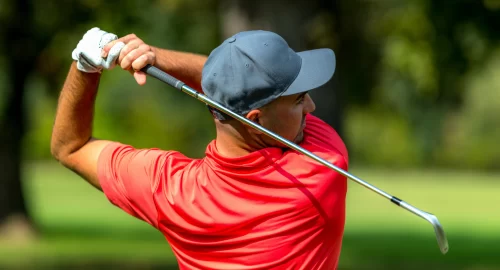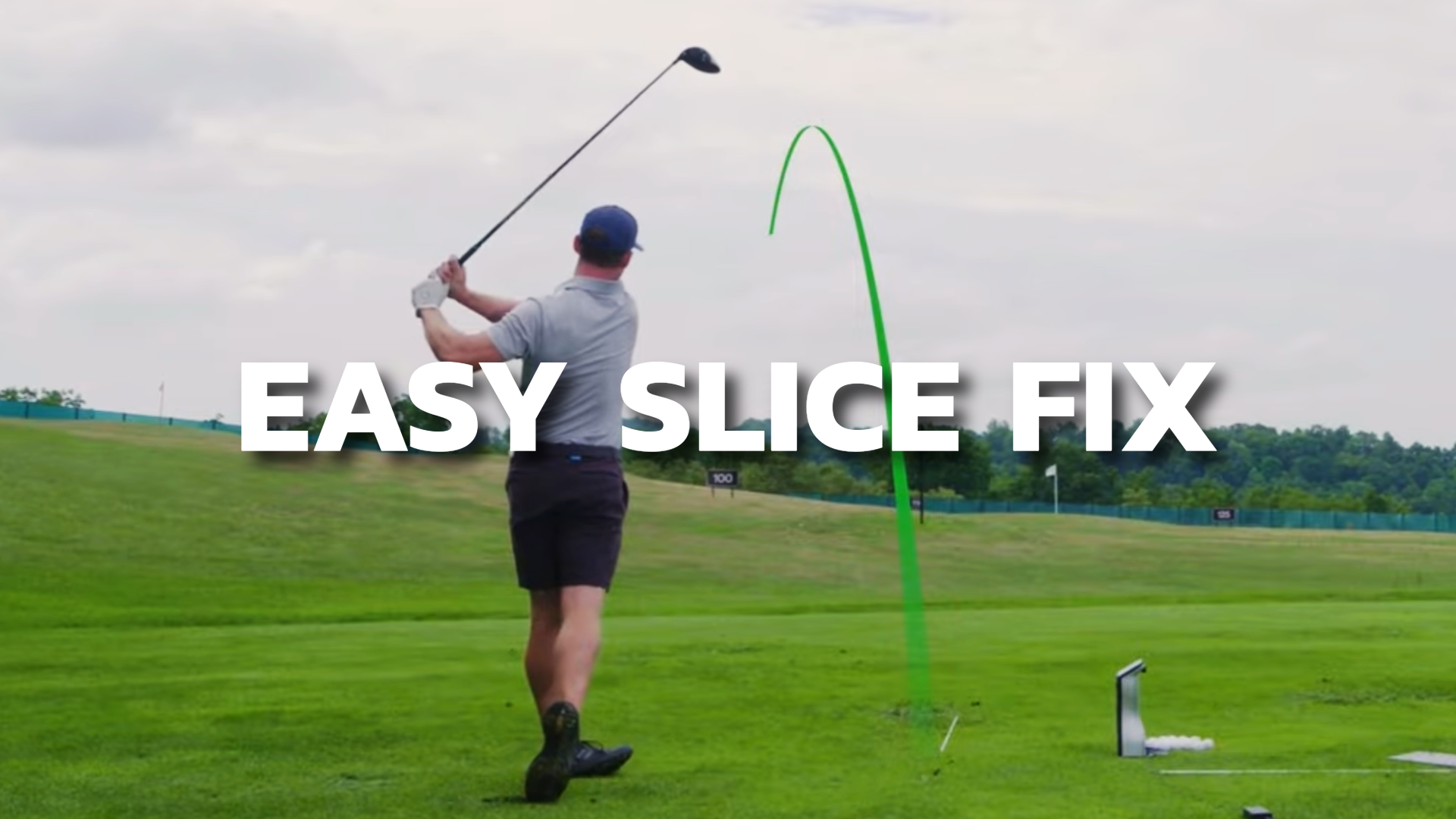
Swinging a golf club can sometimes feel like a battle: with a powerful strike one moment, and a miserable slice the next. Today we’re sharing a two-drill sequence aimed at correcting an over-the-top driver swing and turning that dreaded slice into a well-shaped draw.
Be sure to check out the video first, to get a visual representation of this slice-fix drill!
Understanding the Source of the Slice Problem
A common swing fault for beginner golfers is a steep club path that approaches the ball from “outside-in” (hitting over the top) instead of staying shallow and swinging from inside-out. This results in the clubface being open relative to the path—resulting in a slice.
This observation aligns with swing-theory: a steep downswing and outside-in path make slices far more likely, while a shallow path promotes a draw shape.
Drill #1: Establishing the Correct Backswing and Wrist Angle
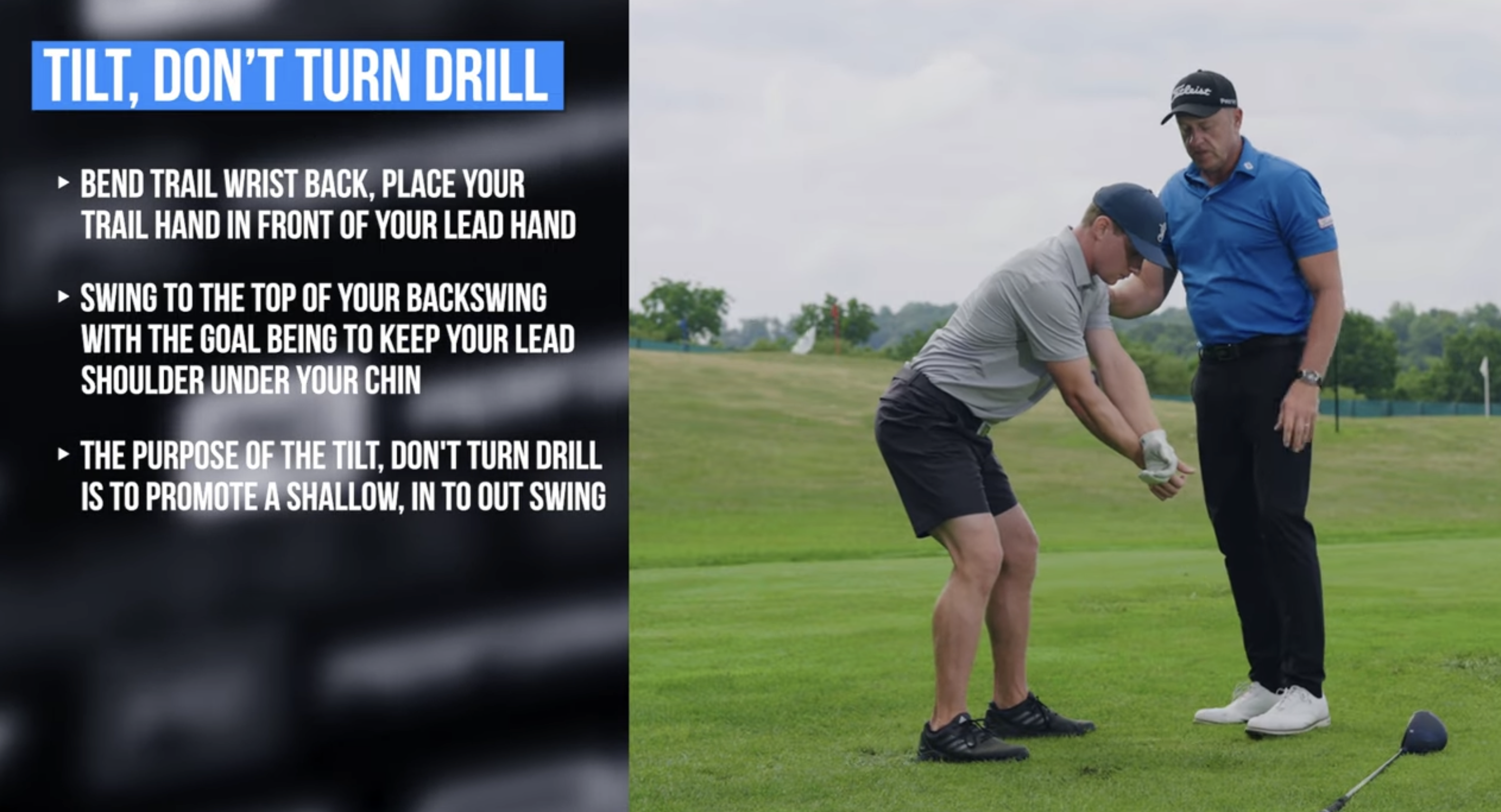
The first drill they introduce is the “tilt don’t turn” backswing drill. Here’s the sequence:
- With the club laid on the ground (or no club), take the address position and let your arms hang.
- Set an angle in the trail wrist, then bring the left hand in front so both back-hands face each other. This wrist angle helps create a shallower plane.
- Turn up to the top of the backswing, with the lead (left) shoulder going under the chin, and keep your head straight. The aim is to tilt (shoulder and torso) rather than rotate wildly or lift steeply. This gets the club into a “shallow channel”.
- Then they add the club back in. Take the normal grip; but then with right hand in front of left, swing back, reproducing the feel of that shallow wrist/shoulder position.
- Feel the club “coming from inside” on the downswing, not “plunging down” from outside. At one hit he sees a ball flight that curves left (a draw) rather than slicing right.
With just one hit, you’ll see the ball flight that curves left (a draw) rather than slicing right! The key takeaway: by starting with the proper wrist angle and setting the shoulders so the lead shoulder goes under the chin, the club’s path becomes more in-to-out and the slice hinges on correcting the path rather than just club face alone.
Drill #2: Solidifying the Shallow Slot
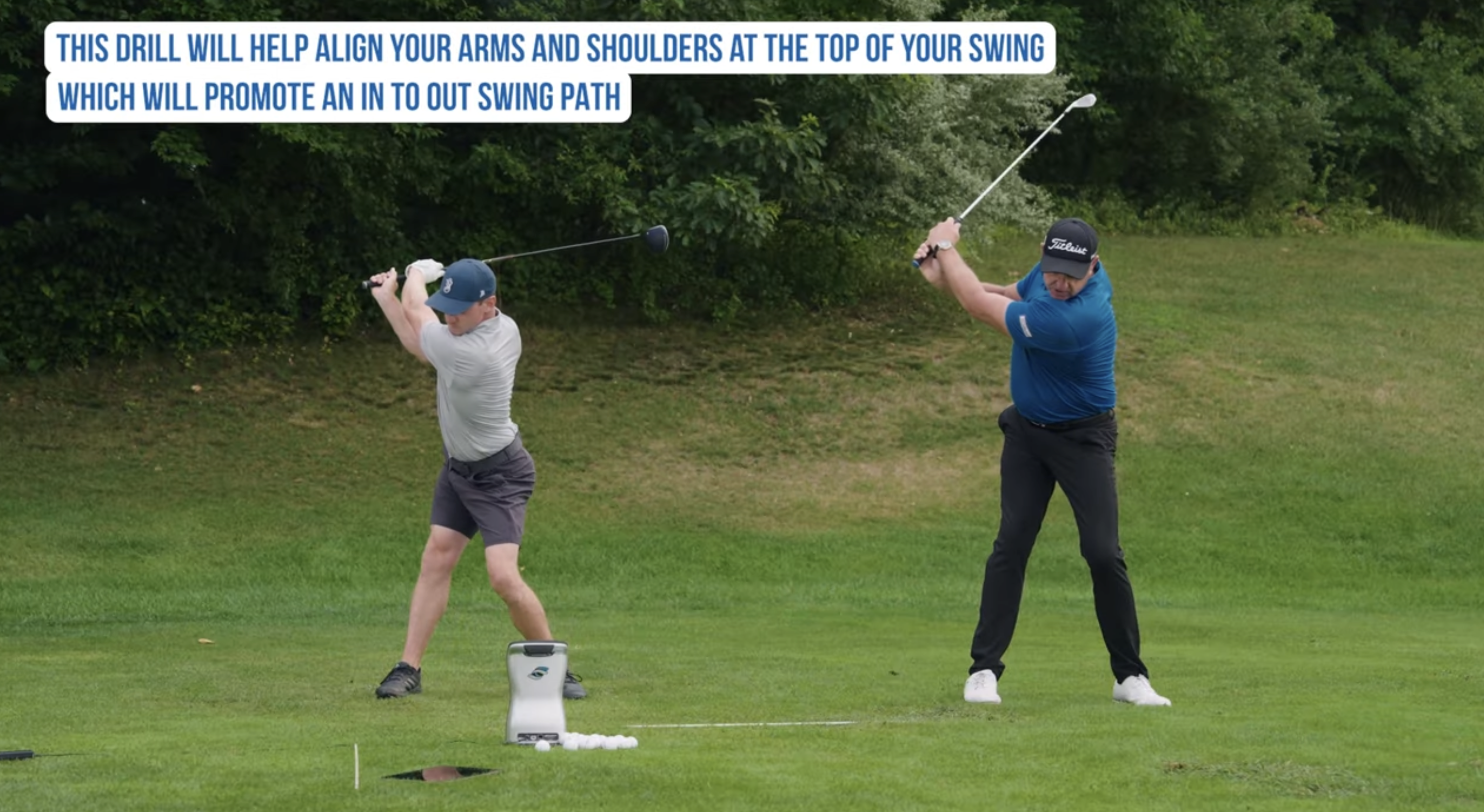
Our second drill to turn a slice into a draw is the “cross-hand control” drill.
- Place your left hand under your right (on the grip) and slightly drop the left hand.
- Simply swing up to the top of the backswing and stop. Then back to start. Repeat with stops.
- The aim: this hand positioning and stop-action encourages the arms and shoulders to align properly at the top, which helps keep the club in the shallow slot and prevents the steep over-the-top move.
- Transition into full swings doing the same feel, and again see a draw result with more solid contact.
Importantly: This drill emphasizes “feel” and body motion rather than mechanically correcting dozens of pieces. It encourages the club path to change, which naturally helps the face-path relationship improve.
Putting it All Together
When you take these drills to the range, start by warming up with the first one. Without hitting any balls, set the wrist angle, turn your lead shoulder under your chin, and focus on feeling that shallower plane.
Next, add your club and repeat the same motion slowly. Pay attention to the sensation of the club dropping into the slot and approaching the ball from the inside. This movement is what helps shift your path away from the steep, over-the-top motion that causes a slice.
Once that feels natural, move on to the second drill using a cross-hand grip. Practice stopping at the top of your backswing and returning to address to reinforce the correct top position and shallow transition.
As your confidence builds, start hitting full swings while maintaining that same inside-out feeling. Watch your ball flight closely—if you see the ball starting to curve slightly left or fly straighter, you’re making progress. If the slice persists, check whether your path is still coming over the top or your shoulders are turning too steeply.
Out on the course, remember that you don’t need to exaggerate the draw. Even reducing your slice for a straighter, more solid flight is a huge improvement. Once the move feels automatic, you can “turn the volume down” for a more controlled and repeatable draw.
Why These Drills Work
The drills target the core issue causing a driver slice: a steep downswing path and outside-in club path combined with an open clubface at impact. By emphasising the “deep to shallow” transition (backswing depth to shallow downswing) you encourage an inside-out path and better face alignment.
Additionally, the drills simplify the fix: instead of trying to correct dozens of swing faults (grip, ball position, stance, hip rotation etc) at once, you zero in on the backswing/top position and path – which then cascades into improved impact conditions.
